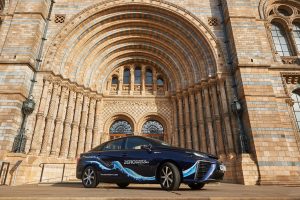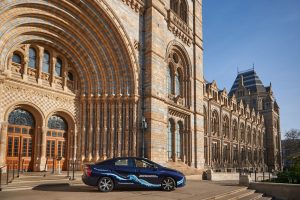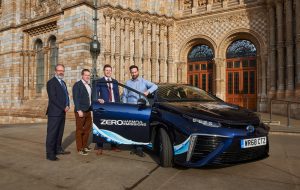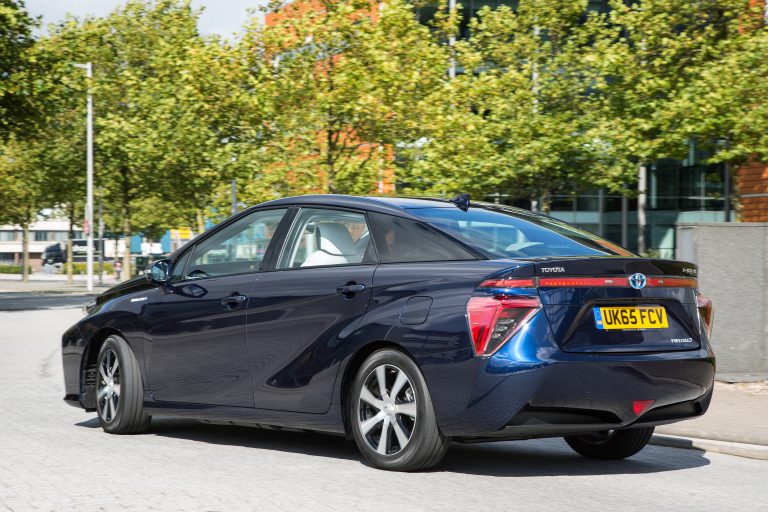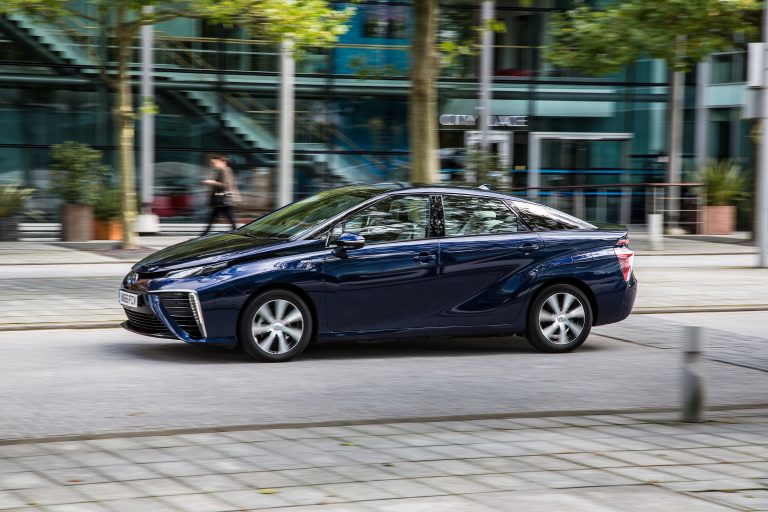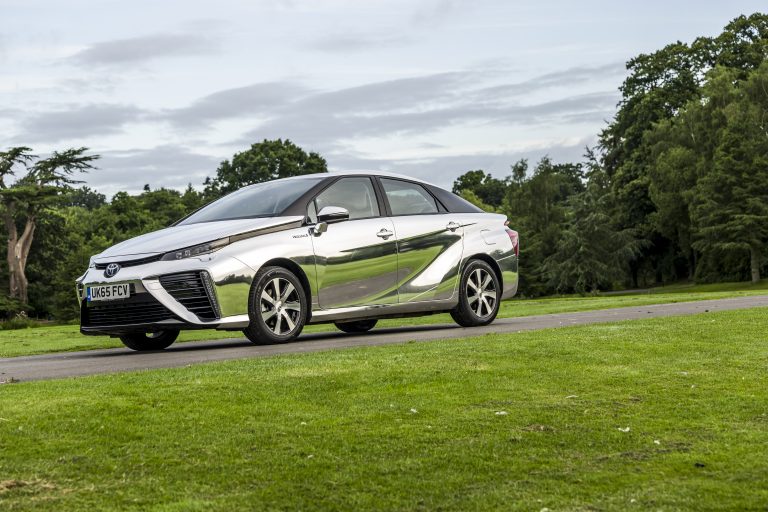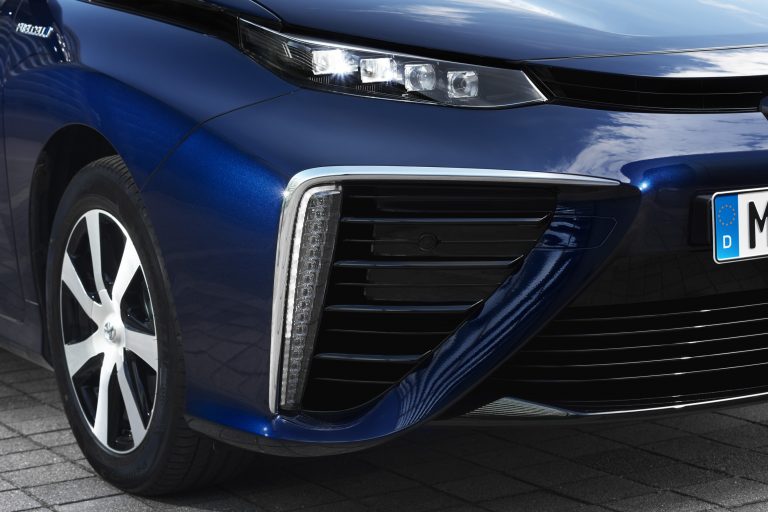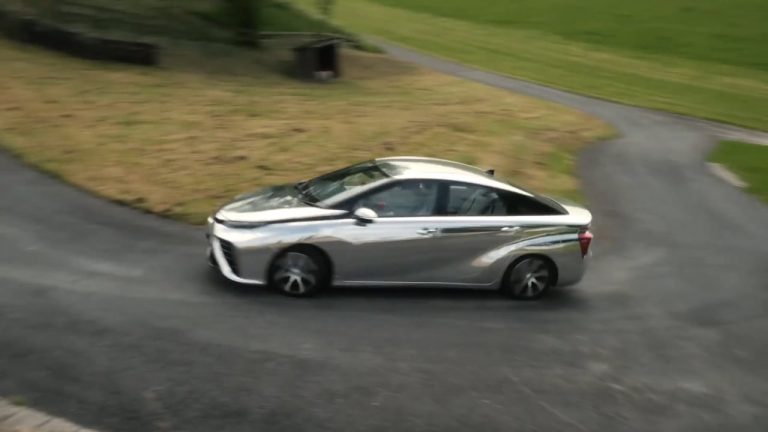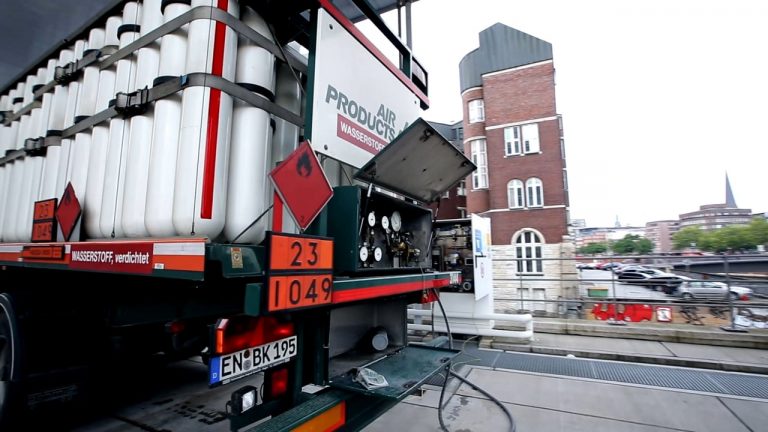Natural History Museum Harnesses Hydrogen Power with the Toyota Mirai
The Natural History Museum has become the latest in a series of distinguished UK academic and research organisations to explore the low carbon transport potential of Toyota’s hydrogen fuel cell technology by taking delivery of a new Mirai saloon.
The car was handed over to the world-famous museum in London on Friday 8th March. It has been acquired with support from the Office for Low Emission Vehicles (OLEV), Hydrogen Mobility Europe (H2 ME) and the Fuel Cells and Hydrogen Joint Undertaking (FCHJU) and follows vehicles recently delivered to University College London and Imperial College London.
The Mirai will be used on regular business journeys around the capital when taking public transport is not possible, for example when moving fragile specimens. It will also be used for shuttle trips between the museum sites in South Kensington and Tring, Hertfordshire. As well as providing practical day-to-day transport, the Museum will use the Mirai as a case study to ascertain the viability of transferring all its vehicles to hydrogen. Wayne Hitchings, Natural History Museum Energy and Sustainability Manager, said: “We are always looking for opportunities to reduce our impact on the environment. With water being the only emission from this hydrogen-powered car, we will be decreasing the museum’s carbon emissions and helping us move towards a future where people and planet thrive together.”
The Toyota Mirai is powered by electricity generated on-board by a fuel cell stack through the process of combining hydrogen with oxygen. On a full tank of fuel it can cover around 300 miles, with smooth, near-silent running and producing no emissions other than pure water. The technology has proved its reliability and usefulness with hundreds of thousands of miles covered in the UK by cars in daily use with private hire companies, public bodies and private businesses.
ENDS
Notes to Editors
Natural History Museum
The Natural History Museum exists to inspire a love of the natural world and unlock answers to the big issues facing humanity and the planet. It is a world-leading science research centre, and through its unique collection and unrivalled expertise it is tackling issues such as food security, eradicating diseases and managing resource scarcity.
The Natural History Museum is the most visited natural history museum in Europe and the top science attraction in the UK; we welcome around five million visitors each year and our website receives over 850,000 unique visitors a month. People come from around the world to enjoy our galleries and events and engage both in-person and online with our science and educational activities through innovative programmes and citizen science projects.

